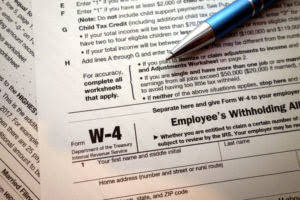
A contra expense account is an account used to reduce the amount of an expense without changing the balance in the main expense account. Examples of contra expense accounts include Purchase Returns, Purchase Discounts, and Advertising Reimbursements. The purpose of the Sales Returns account is to track the reduction in the value of the revenue while preserving the original amount of sales revenue.
Is a Contra Account a Debit or Credit?

This can have various strategic implications, from attempting to increase per-share earnings to trying to prevent takeovers. Contra equity accounts, therefore, act as a ledger for corporate strategy, impacting how the worth of a company is perceived from the outside. Understanding how contra Bookkeeping for Chiropractors revenue accounts impact financial ratios is essential for assessing a company’s financial health. These accounts play a pivotal role in shaping key financial metrics that investors and management use to evaluate performance. A typical example of a contra revenue account is the Sales Returns and Allowances account.

Equity Contra Account
A contra account is a type of account that is used to offset another account. contra revenue account It is a separate account that is linked to another account, and it is used to reflect the opposite of the balance in that account. And let’s not forget the all-important Allowance for Doubtful Accounts, acting as a financial crystal ball that estimates the portion of accounts receivable that might just turn into fairy dust.

Advance Your Accounting and Bookkeeping Career

This unique feature allows businesses to track their gross sales while also accounting for any reductions such as returns, allowances, or discounts—ultimately giving a clearer picture of net sales. A contra revenue account is used to offset a related revenue account, typically carrying a debit balance. It helps businesses accurately report net sales by accounting for returns, allowances, and discounts. This ensures clarity in financial reporting and aids in understanding customer behavior for better business decisions.
It represents the amount of stock that has been repurchased by the company. The purpose of this account is to reduce the total equity on the balance sheet. A contra account is an account that is used to offset the balance of a related account on a company’s financial statements. The main purpose of a contra account is to provide a more accurate representation of a company’s financial position by showing the net balance or net amount of an account, rather than the gross balance or gross amount. For example, a contra account is used to offset the balance in a company’s accounts receivable account. When a customer makes a payment, the amount is credited to the accounts receivable account and debited to the cash account.
- In other words, its expected balance is contrary to—or opposite of—the usual credit balance in a revenue account.
- Regularly review these policies and adjust based on data-driven insights to align with market conditions and customer expectations.
- Contra liability accounts are typically used for bonds, notes payable, and other indebtedness.
- For example, if the company purchased a computer for 1,000 and it had a five-year life expectancy using straight-line depreciation, the contra account would be debited for 200 each year (the 1,000 divided by 5 years).
- The contra revenue accounts help you adjust your books to show net sales of $9,000 ($10,000 – $500 – $200 – $300).
The difference between an asset’s balance and the contra account asset balance is the book value. Contra account accounting plays a crucial role in financial accounting by offsetting the balance of another account. It is used to track and report adjustments, reversals, or reductions in the value of assets or liabilities. Contra accounts provide a transparent and accurate representation of a company’s financial position, ensuring that financial statements reflect the true financial health of the business. However, when recording a cash receipt from a customer, the cash account is debited, and the accounts receivable account is credited. This is because the cash account is an asset account, and assets are increased by debits, while the accounts receivable account is a liability account, and liabilities are unearned revenue decreased by credits.
This process calculates the decline in value of the natural resource and offsets it against the initial appraisal of the land where the resource is being extracted from. For the ultimate learning experience, consider a Full-Immersion Membership that offers unlimited access to an extensive collection of templates, courses, and tools. It’s the ideal platform for those looking to take their skills—and their business’s financial clarity—to the next level. Examples of deferred unearned revenue include prepaid subscriptions, rent, insurance or professional service fees. For the past 52 years, Harold Averkamp (CPA, MBA) hasworked as an accounting supervisor, manager, consultant, university instructor, and innovator in teaching accounting online.
- When accounting for assets, the difference between the asset’s account balance and the contra account balance is referred to as the book value.
- When a customer makes a payment, the amount is credited to the accounts receivable account and debited to the cash account.
- Contra accounts play an important role in accounting by helping businesses track certain aspects of their finances more accurately.
- Therefore, for these three, the debit balance actually represents a negative amount.
- Focusing on these areas can help your business not only survive, but thrive, in today’s competitive market.
The allowance for doubtful accounts is used to reduce the net income by the estimated amount of uncollected receivables. This account helps to give a more accurate picture of the company’s financial position. The sales allowances account is similar in use to the sales returns account, except that it deals with allowances given against a defective product which the customer has kept and not returned to the business. Contra accounts are used to reduce the value of the original account directly to keep financial accounting records clean. This type of journal entry records the receipt of cash from customers for goods or services previously sold on account.
